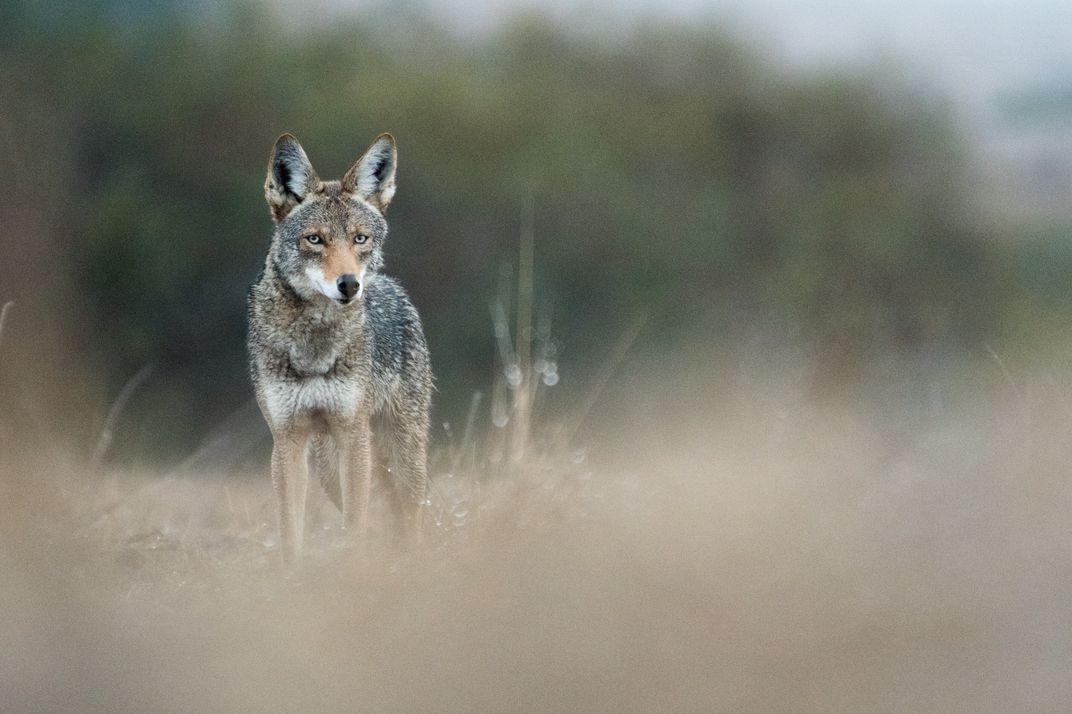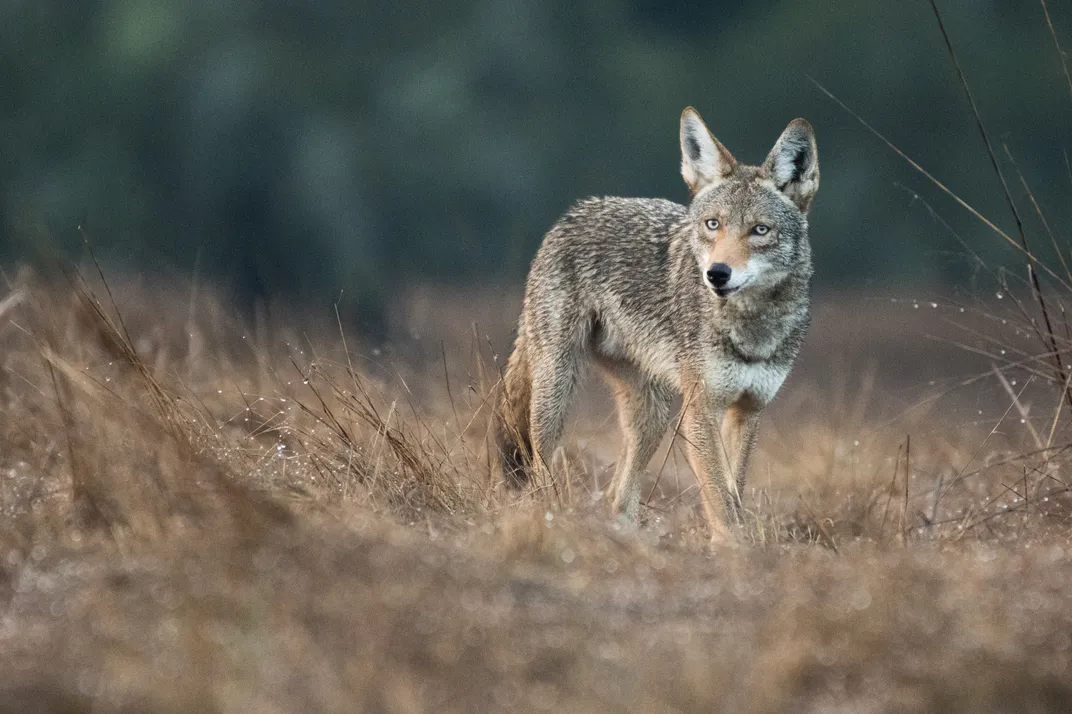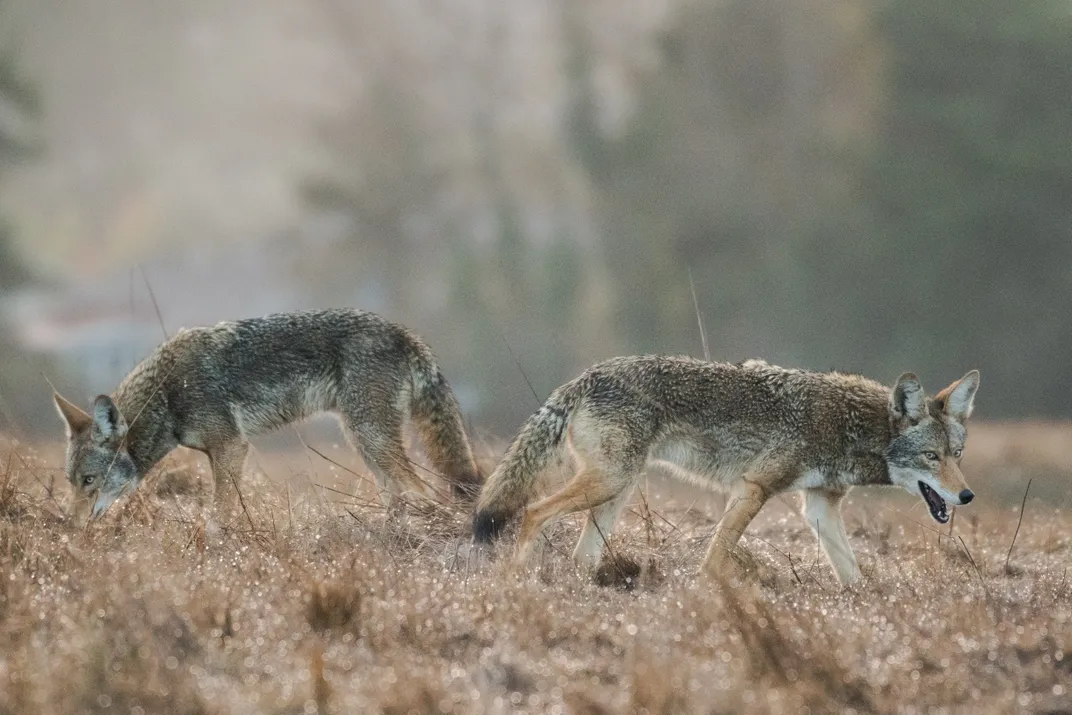Rare Blue-Eyed Coyotes Spotted in California
Coyotes’ eyes are consistently golden-brown, so researchers have been surprised to learn of five California coyotes with piercing baby blues
/https://tf-cmsv2-smithsonianmag-media.s3.amazonaws.com/filer/a0/71/a071b916-987f-430c-813e-6cf81ffe53da/daniel_dietrich_1322927_web.jpg)
When wildlife photographer and guide Daniel Dietrich snapped a picture of a blue-eyed coyote in Point Reyes National Seashore, experts were shocked by its brilliant blue peepers. Eye color tends to be consistent in wild animals; among coyotes, that color is golden-brown.
“I’ve never seen this,” Juan J. Negro, a researcher who studies animal eye color, said of the photo during an interview with National Geographic’s Callie Broaddus last year.
But it seems that the trait, though still rare, is becoming more common among the coyotes that roam through Northern California. As Broaddus reports in a second National Geographic article, five blue-eyed coyotes have now been documented in the region: two in Point Reyes, the other three in Santa Cruz and Sacramento.
Due to selective breeding, blue eyes are not unheard of among domestic canines. Recently, in fact, scientists were able to pinpoint a genetic mutation that may give Siberian huskies their defining baby blues. But while domestic dogs and wild coyotes have been known to interbreed, experts don’t think such unions are behind the blue-eyed coyotes in California. So-called “coydogs,” as coyote-dog hybrids are known, tend to have distinctive coat colors and facial structures—but not blue eyes, Broaddus reports.
Instead, researchers think the phenomenon is the result of a naturally occurring genetic mutation, likely one that appeared a few generations ago. The new blue-eyed coyotes may be descendents of the original mutant. As Negro tells Broaddus, blue eyes could be disadvantageous to coyotes, making the animals more visible to predators and possibly increasing light sensitivity. But the trait might be cropping up more frequently now because selective pressures on coyotes have eased off as humans have killed or otherwise eradicated their predators, like wolves and mountain lions.
Transient coyotes, which leave or are forced out of their family groups, may be responsible for spreading the trait among California coyotes. These lone canines tend to traverse large geographic ranges until they are accepted by another pack or form their own. But there “needs to be much more research before people make wide-ranging pronouncements about what’s happening,” Marc Bekoff, an ecologist and evolutionary biologist at the University of Colorado, tells Noor Al-Samarrai reports for Atlas Obscura.
Regarded as livestock-killing pests, coyotes are often the target of government culls and civilian hunts—measures that overlook coyotes’ important role in keeping small herbivores in check and are generally ineffective at reducing livestock predation. California prohibits “coyote killing contests,” and for now, the state’s blue-eyed coyotes seem to be faring well, which could mean that we’ll be seeing more of them in the future.


